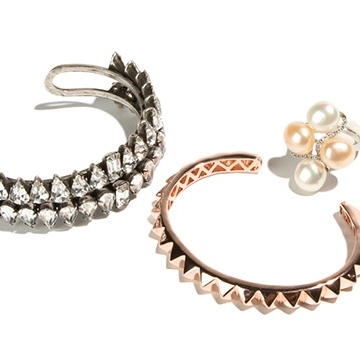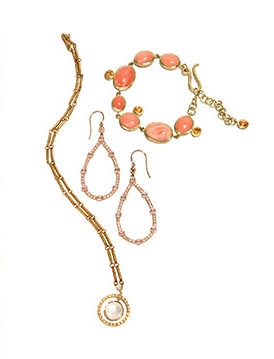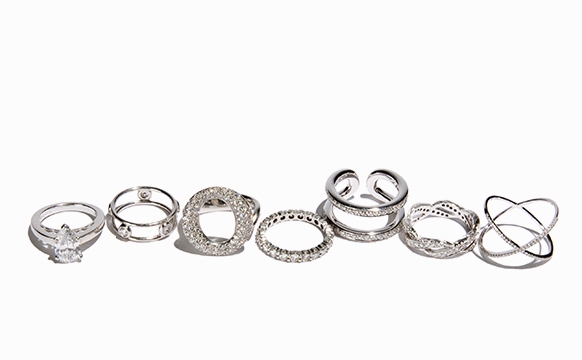
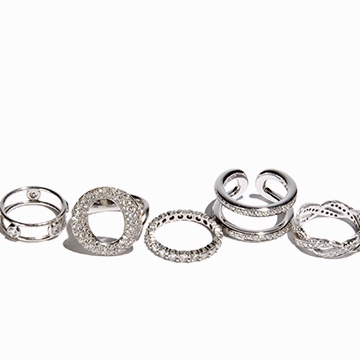
7 Expert Tips for Buying a Diamond
Buying a diamond is not only an investment, it’s deeply personal. Of course there are the four Cs you’ll want to know about when searching for the perfect diamond — cut, color, clarity and carat — but we asked our gem experts to share some finer points on what makes a diamond valuable, what to watch out for and how to go about choosing the right design for you. Read on for advice from our Lead Gemologist, Kathy Harrie, and Senior Merchant for Fine Jewelry & Watches, Serena Ramsey.
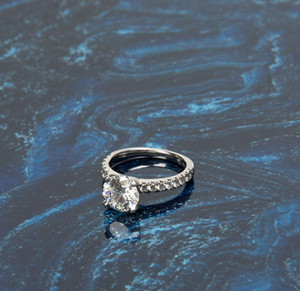 1. Invest in the best cut you can afford.
1. Invest in the best cut you can afford.
While the shape of a diamond describes its general appearance — for example round, oval or square — cut determines a diamond’s brilliance. The better a diamond is cut, the more it will sparkle, and arguably the more beautiful the stone. Which is why our experts cite cut as a key factor when evaluating a diamond. “[The first thing I look for is] the most sparkle. Cut to me is a quality factor,” says Harrie.
Ramsey explains how cut allows light to shine through a stone: “A diamond’s play of light through its facets is like the interplay of windows and mirrors. Ideally, facets on top allow light in and facets on the bottom reflect light back.”
2. Watch out for fluorescence.
Fluorescence causes diamonds to glow under UV light. “It appears in varying shades of blue and can detract from a diamond’s beauty and devalue it by making it appear milky,” says Harrie.
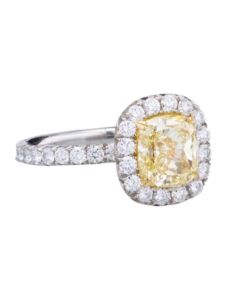 3. Consider a fancy color diamond.
3. Consider a fancy color diamond.
Normally, diamonds with the highest color rating are those with the least color, making them the whitest and the most clear. But when the natural yellow and brown hues often found in diamonds become saturated enough, they’re prized for their colorful intensity. “They’re very expensive. Yellow and brown are the most common colors,” notes Harrie. Less common, and even more valuable, are pink fancy color diamonds.
4. Bigger isn’t necessarily better.
Just because one diamond looks bigger than another doesn’t mean it has a higher carat weight. Says Ramsey, “It’s unique, how you want to balance size and sparkle. Cut is sometimes sacrificed for carat weight, but a better cut can mean more brilliance and more beauty.”
5. Enlist an expert.
With an untrained eye, there’s no easy way to tell whether a diamond is real or fake, or where it ranks on the scales of cut, color, clarity and carat. “Only under magnification can you see the alignment of a diamond’s facets or microscopic inclusions that diminish its clarity,” cautions Ramsey. “At The RealReal, we test every diamond with specialized gemological tools to determine authenticity and distinguish from simulants.”
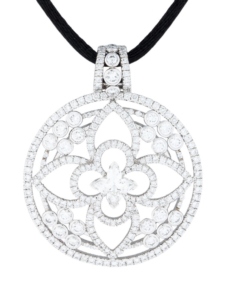 6. Keep up with diamond trends.
6. Keep up with diamond trends.
While round diamonds are still considered classic, Ramsey explains, “For brides, nowadays people want something that’s really uniquely them, whether it’s a traditional round diamond in a unique setting, or a traditional setting with a unique cushion cut.” And traditional or modern styles aren’t the only choices. “There are so many designer cuts now,” Harrie points out. “We just got in a Louis Vuitton cut pendant.”
7. Ultimately, trust your taste.
Much like personal style, diamonds are unique. Each gem is unearthed in its raw form which diamond cutters may study for years before cutting, in order to maximize the yield of the stone and create the perfect custom cut. “Buy what speaks to you,” encourages Harrie.
All items are pre-owned and consigned to The RealReal. Trademarks are owned by their respective brand owners. No brand owner endorses or sponsors this ad or has any association and/or affiliation with The RealReal.
Please note: Brand standards, logos and other identifying features may have changed since the time of publication.




